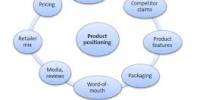Overall Basis of Market Segmentation
Market segmentation means dividing a market into smaller groups of buyers with distinct needs, characteristics, or behaviors who might require separate products or marketing mixes. It splits up a market into different types (segments) to enable a business to better target its products to the relevant customers
Segmenting is dividing a group into subgroups according to some set ‘basis’. These bases range from age, gender, etc. to psychographic factors like attitude, interest, values, etc. Demographic factors are the most popular bases for segmenting the consumer group. One reason is that consumer needs, wants, and usage rates often very closely with the demographic variables.
Gender
Gender is one of the simplest yet important bases of market segmentation. The interests, needs, and wants of males and females differ at many levels. Thus, marketers focus on different marketing and communication strategies for both. Gender segmentation is used in clothing, cosmetics, and magazines. This type of segmentation is usually seen in the case of cosmetics, clothing, and jewelry industry, etc.
Age group
Segmenting market according to the age group of the audience is a great strategy for personalized marketing. Most of the products in the market are not universal to be used by all the age groups. Hence, by segmenting the market according to the target age group, marketers create better marketing and communication strategies and get better conversion rates. For example, McDonald’s targets children, teens, adults, and seniors with different ads and media. Markets that are commonly segmented by age include clothing, toys, music, automobiles, soaps, shampoos, and foods.
Income
Income decides the purchasing power of the target audience. It is also one of the key factors to decide whether to market the product as a need, want or a luxury. Income is used to divide the markets because it influences the people’s product purchase. It affects a consumer’s buying power and style of living. Marketers usually segment the market into three different groups considering their income. These are
- High Income Group
- Mid-Income Group
- Low Income Group
This division also varies according to the product, its use, and the area the business is operating in.
Place
The place where the target audience lives affect the buying decision the most. A person living in mountains will have less or no demand for ice cream than the person living in a desert.
Occupation
Occupation, just like income, influences the purchase decision of the audience. A need for an entrepreneur might be a luxury for a government sector employee. There are even many products which cater to an audience engaged in a specific occupation.
Usage
Product usage also acts as a segmenting basis. A user can be labeled as heavy, medium or light user of a product. The audience can also be segmented on the basis of their awareness of the product.
Lifestyle
Other than physical factors, marketers also segment the market on the basis of lifestyle. Lifestyle analysis provides marketers with a broad view of consumers because it segments the markets into groups on the basis of activities, interests, beliefs, and opinions. Lifestyle includes subsets like marital status, interests, hobbies, religion, values, and other psychographic factors which affect the decision making of an individual.
Information Source:
















